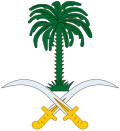| Ambassador of Saudi Arabia to Yemen | |
|---|---|
| سفير خادم الحرمين الشريفين لدى اليمن (Ambassador of the Custodian of the Two Holy Mosques to Yemen) | |
 Coat of Arms of Saudi Arabia | |
| Inaugural holder | Sheikh Mohammed 'Ubaikan |
| Formation | 1958 |
The List of Saudi ambassadors to Yemen lists the ambassadors from Saudi Arabia to Yemen. Nine ambassadors served between 1958 and 2019. Mohammed Al-Jaber is the most recent ambassador. He resides in Aden, Yemen's capital.